Chelmno (Kulmhof)
By the summer of 1941, the ghettos in Wartheland (occupied part of Poland incorporated in Germany in 1939) had become overcrowded and diseases began to spread uninhibitedly. The Jews in the ghettos were used by the germans for slave labor, but diseases and other misery contributed to thousands of Jews not being able to work. Wartheland’s chief political leader, Arthur Greiser, understood that the situation would worsen in the coming winter. Greiser’s solution to this was simply to murder those Jews who were unproductive (sick or superfluous). Therefore, Greiser requested permission from Hitler to conduct a ”special treatment” for about 100,000 unproductive Jews. Who in any case couldn’t be fed and housed during the winter and would probably die anyway. Hitler granted Greiser’s wish, a wish that later culminated in that head of the Security Service (SD) in Posen, SS-Obersturmbahnführer Heinz-Rolf Höppner, wrote a letter to his superiors in Berlin and got the go-ahead to move on.
Responsibility for solving the problem of these 100,000 unproductive Jews went to the higher SS and Police Leader of the Wartheland, SS-Obergruppenführer Wilhelm Koppe, who in turn delegated the task to SS-Standartenführer Ernst Damzog, head of the Security Service (SIPO) in Posen. Damzog forwarded the assignment to SS-Sturmführer Herbert Lange. Lange had since October 1939 gained experience in killing people. Lange led a special commando who killed Polish citizens with physical and mental disabilities at several mental hospitals in Wartheland and East Prussia. Murder was carried out with a truck converted into a mobile gas chamber and in a provisional gas chamber in Fort VII – Posen. But the murder of about 100,000 Jews was a task that hitherto had no precedent, but in November 1941 Lange had found a suitable place where a extermination camp could be established.
The site chosen by the Nazis was a small town called Chelmno (german Kulmhof) on the river Ner, about 100 kilometres northwest of Lodz. The fact that Lange chose Chelmno was due to the fact that the place had good rail road connections with ghettos within Wartheland and that it was relatively secluded. Lange and his staff (Sonderkommando Lange) confiscated a manor house on a hill in which the actual reception and murders would take place. The bodies would then be buried in a wooded area about four kilometers northwest of the manor. Additional properties were confiscated near the mansion. The camps were called Hauslager (mansion) and Waldlager (forest area). The murder itself was carried out in three trucks whose cargo space was converted into gas chambers. Two of the trucks had a capacity of 50 -60 people while the third had a capacity of 75 – 85 people.
The first transport with Jews arrived at the mansion, December 7, 1941, and consisted of about 700 jews from the ghetto in Kolo. They were forced to stay overnight at the mansion and were murdered the next day. The murders had been preceded by a fake speech where the Jews wre to continue their journey. But first their clothes had to be disinfected before they could continue their journey to Germany where work awaited. They were therefore asked to surrender their belongings, step into the manor, undress and then go down into the basement and along a corridor step into a truck that would take them to the shower. In cases where someone or some hesitated, they were rudely urged by the SS guards to hurry, not infrequently, by the use of force from the guards. When the truck’s cargo space was full, the door was closed and an SS man started the truck’s engine, whose exhaust gases were led into the airtight cargo area via a hose.
After 20 – 30 minutes, the screams and pounding stopped inside the cargo space. An SS man controlled the space by peering into a peephole to see if the Jews were dead. Once dead, the truck drove to Waldlager where a Jewish burial commando met the truck and buried the bodies in large pre-digged mass graves. These Jews had been forced by the germans to conduct this horrific work. Another Jewish command worked in Hauslager to sort the victims’ clothes and other belongings they had with them. Not infrequently, there had been air pockets in the cargo space, which meant that not everyone was dead. In such cases, they were shot by SS guards on site. It also happened that a single transport was not gassed, but was taken directly to Waldlager where they were shot. In short, Chelmno had a capacity to murder about 800 people per day. Until mid-January 1942, mainly Jews from nearby ghettos were murdered in Chelmno, then deportation began of Jews from Lodz ghetto. The Jews were deported to Chelmno by either train and truck.
Deportations were often time-consuming and logistically difficult. In Kolo, the Jews had to change from one train to another train because the rail way track further to Chelmno had a narrower gauge. Sometimes the Jews were forced to stay overnight in a synagogue in Kolo before they could continue the next day towards Chelmno. However, the trains could not go all the way to Chelmno because a bridge had been blown up between Kolo and Chelmno. The Jews were therefore forced to get off in Powiercie and walk about a kilometer to Zawadka, where they spent the night in a mill. From Zawadka it’s as about five kilometers to Chelmno and the Jews were usually transported by truck, but sometimes they had to walk. Later the bridge was repaired and then the trains could go all the way to Chelmno. In 1942, Lange was replaced by Hans Bothmann.
In the summer of 1942, the bodies of Waldlager began to become a sanitary nuisance and a stench began to spread to the surroundings. The Nazis then decided to cremate the bodies by digging them up and cremating them on primitive crematorias erected next to the mass graves. In the autumn of 1942 the number of transports decreased and in april 1943 the jews who were to be murdered had been murdered and therefore the Nazis decided to dismantle Chelmno extermination camp. The manor was blown up and at the mass graves, trees were planted as cover up and the Jewish workers forced to work in the camp were murdered. Of the SS staff, most were sent to the Balkans to fight partisans. During this period, about 145,000 Jews were murdered, about 5,000 gypsies and a small number of poles and Soviet prisoners of war.
However, Chelmno was re-activated in spring 1944. The reason was that the Nazis had decided that the Lodz ghetto would be liquidated and its inhabitants would be murdered. Bothmann and his staff were therefore to return to Chelmno and reactivate the camp. At the end of June, Chelmno was once again ready to murder Jews, but since the mansion was destroyed, all the killings took place in Waldlager. The Jews first arrived by train to a small station in Chelmno and were then forced to stay overnight in a church near the site of the mansion. The next day they were taken to ”mansion” where they were told that they would be sent on to work, but first had to be disinfected. Then they stepped up into (regular) trucks that brought them to two receiving barracks in Waldlager where they were asked to undress. Then they were forced into a mobile gas chamber in which they were murdered by the engine exhausts.
The bodies were buried in mass graves and cremated in two crematorias were built next to the mass graves. But the murder process in Chelmno was too slow and it was urgent because the Soviet Red army advanced westward. The deportations from Lodz ghetto were stopped in mid-July and the remaining Jews were sent to Auschwitz. Chelmno was subsequently liquidated, the barracks destroyed, the bodies cremated and in January 1945 the last of the Jewish workers were murdered. But the last Jews put up a fight and at least two SS officers died during the fight. Eventually, all Jews were killed. During the second period, no more than 7,000 Jews were murdered.
Current status: Demolished with museum (2015).
Location: 52°09' 14.75" N 18°43' 23.12" E (Forest camp) 52°06' 48.85" N 18°44' 53.59" E (Mansion).
Get there: Car.
Follow up in books: Montague, Patrick: Chelmno and the Holocaust – The History of Hitler´s First Death Camp (2012).
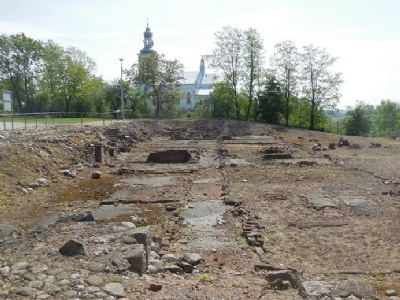

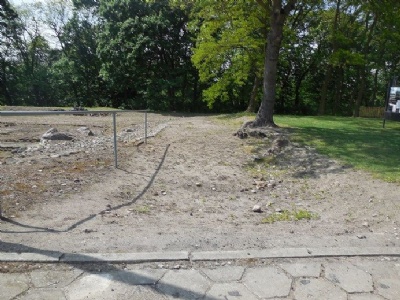
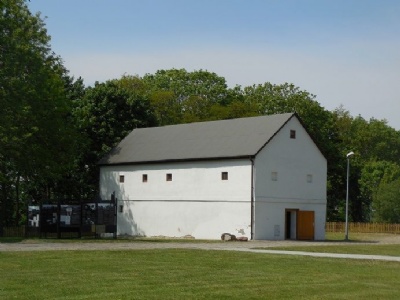
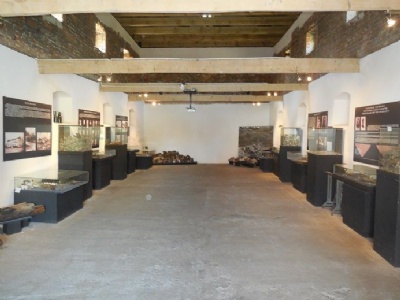


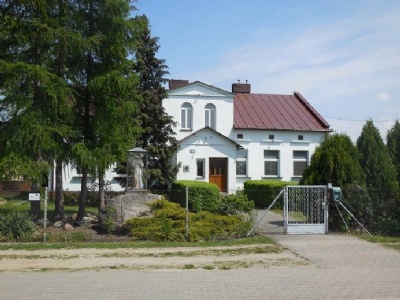

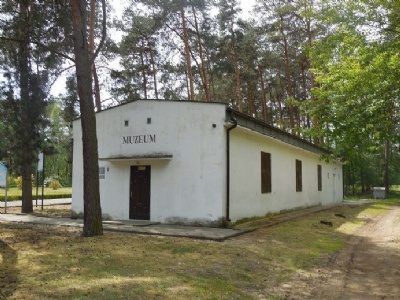
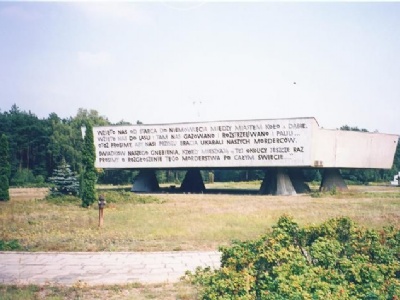
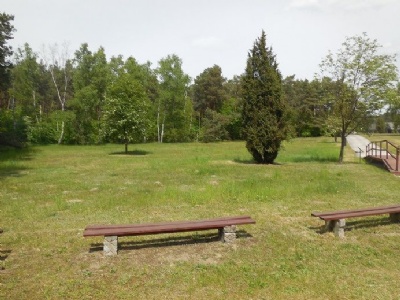
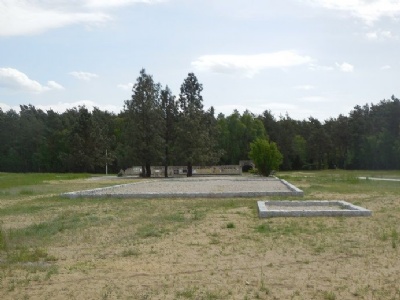
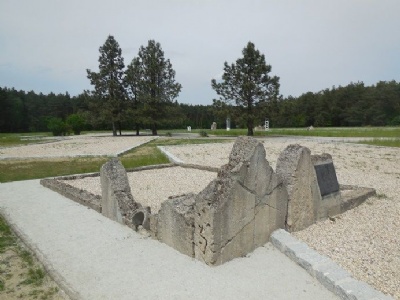
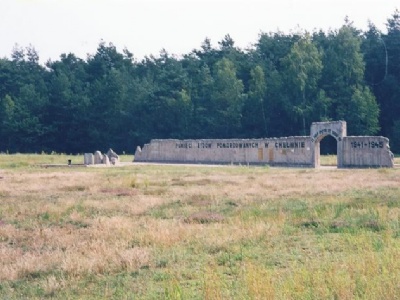
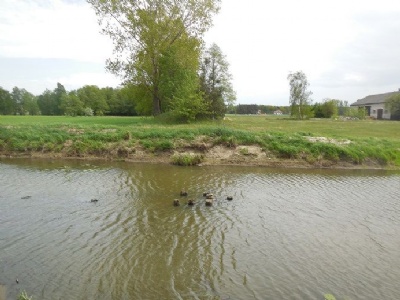
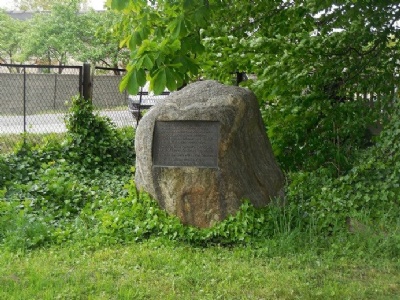
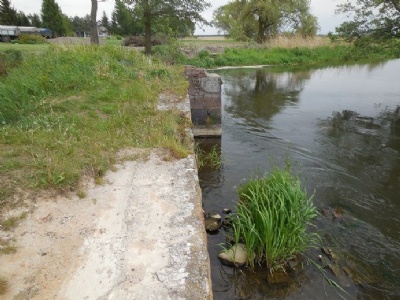
When Chelmno started its murder operations in December 1941, it was the first Nazi extermination camp to be established. It happened as mentioned on the initiative of local leaders and not from any order from Berlin. But Chelmno was not the first extermination camp to be built, around the same time that Chelmno began to be established in November 1941, the construction of another extermination camp in Lublin district, Belzec, had begun, also on local initiative. The background to the rise of both camps can be found in the overcrowded ghettos and the misery this caused and that thousands of Jews were unproductive (sick or superfluous). Similarities can be found so far, but the solution to the problems encountered was independent of each other. In the Lublin district, the local leaders (with Himmler’s consent) chose to build stationary gas chambers according to the model used in Germany under the so-called, T-4 program (killing of mentally and physically ill German citizens). In Chelmno, the Germans, as mentioned, chose a solution with mobile gas chambers based on the experience that Lange had. The purpose of both Chelmno and Belzec was nevertheless ultimately the same, to annihilate Jews who were within a respective area/district. Even further east, the local leaders chose another solution, namely mass shootings. Minor mass shootings continued to happened in districts where extermination camps were established as a complement to the gassings.
The fact that Chelmno could be established in just one month was due to Lange taking over existing buildings and did not, unlike Belzec (which was completed in March 1942), need to build the camp from the ground. The fact that Chelmno still became the only one of the extermination camps that used mobile gas chambers was partly due to the fact that the trucks proved unreliable and often broke down and required regular repairs. On the one hand, they were also ineffective in the sense that they had a limited capacity for large-scale murder. The killing of physically and mentally handicapped people was a minor operation that did not require an equal capacity, but murdering hundreds of thousands was something different. This is why, for example, Auschwitz built larger stationary gas chambers because these were both more reliable and more efficient.
It would be wrong to say that Chelmno fell into oblivion after the war because it did not. Lawsuits against SS officers were held, witnesses were heard and books were written (albeit in Polish and not so many). But it still ended up in the shadow of the other five official extermination camps, which meant that the camp did not reach outside research circles and Poland. It was only in the 2000s that the site underwent a renovation, archaeological excavations were carried out and a new museum was established (a budget variant in all its simplicity but well so interesting). Especially at the Hauslager (mansion) it is really interesting to see the ruins of the manor’s basement. Therefore, it can be said that the camp has now received recognition that it did not have before and that it has reached a wider circle. But as a visitor you hardly need to be worried about crowding with others as it still ends up in the shadow of the others, although the others are a development of the lessons Nazis learned in Chelmno.